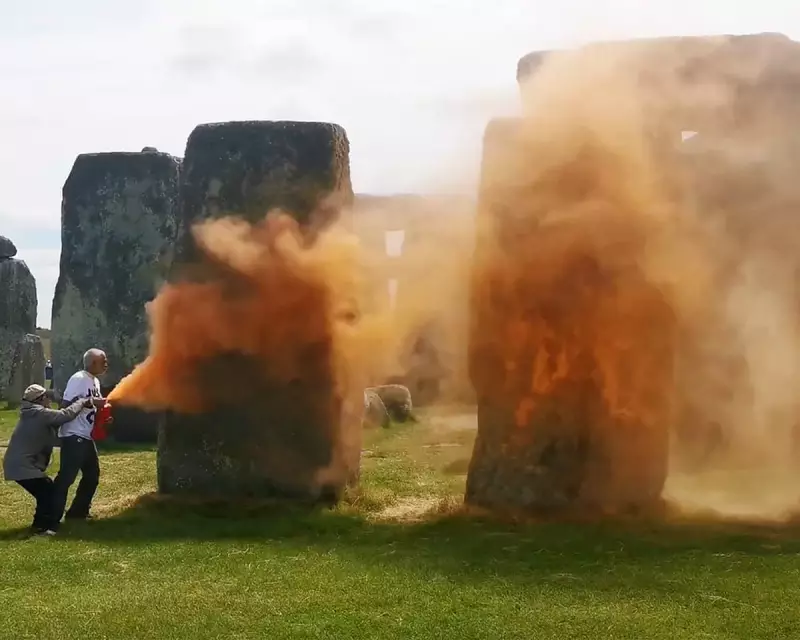
Two climate activists have admitted to spraying the ancient stones of Stonehenge with bright orange paint, telling Salisbury Magistrates' Court they deliberately targeted the world heritage site to achieve maximum impact for their environmental message.
The defendants, identified as members of the Just Stop Oil group, stated their actions at the 5,000-year-old monument were calculated to create significant disruption and attract widespread media coverage to protest continued government support for fossil fuels.
Deliberate Targeting of Iconic Site
During court proceedings, the activists made no attempt to conceal their strategic thinking behind choosing Stonehenge. They explicitly described the prehistoric circle as "the perfect target to generate the level of attention our climate emergency demands".
The court heard how the pair used fire extinguishers filled with orange powdered paint to deface several of the massive sarsen stones that have stood on Salisbury Plain for millennia.
Immediate Response and Cleanup
English Heritage, which manages the site, immediately deployed specialist cleaning teams to assess and address the damage. Initial examinations suggest the paint hasn't caused permanent harm to the stone surfaces, though conservation experts continue to monitor the situation closely.
The incident caused significant disruption, with the site temporarily closed to visitors while emergency assessments took place. Tourists who had travelled to see the monument expressed their disappointment at finding the ancient stones vandalised.
Growing Pattern of Heritage Targeting
This protest forms part of an escalating pattern where environmental groups are targeting culturally significant locations to amplify their message. The activists defended their actions as necessary to highlight what they describe as the government's "criminal inaction" on climate change.
Legal proceedings continue as authorities consider appropriate sentencing for the activists, who remain unapologetic about their methods despite facing potential serious consequences for damaging a protected ancient monument.





